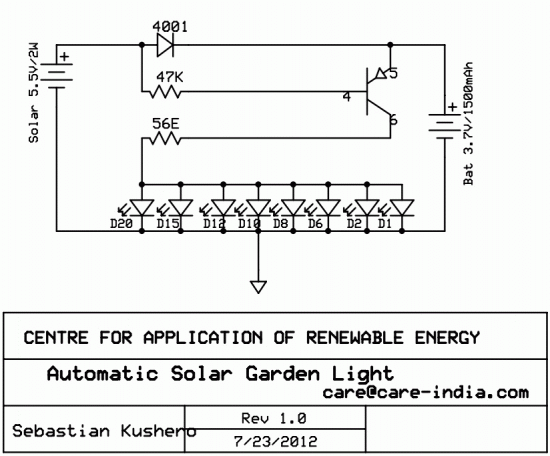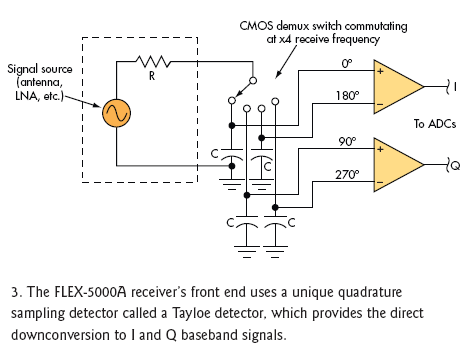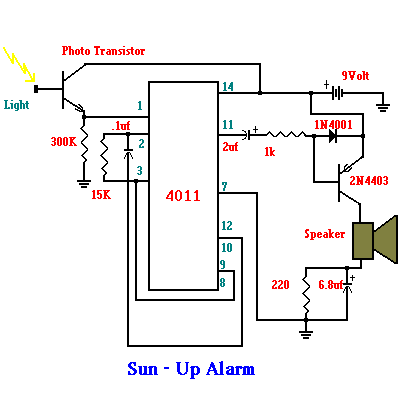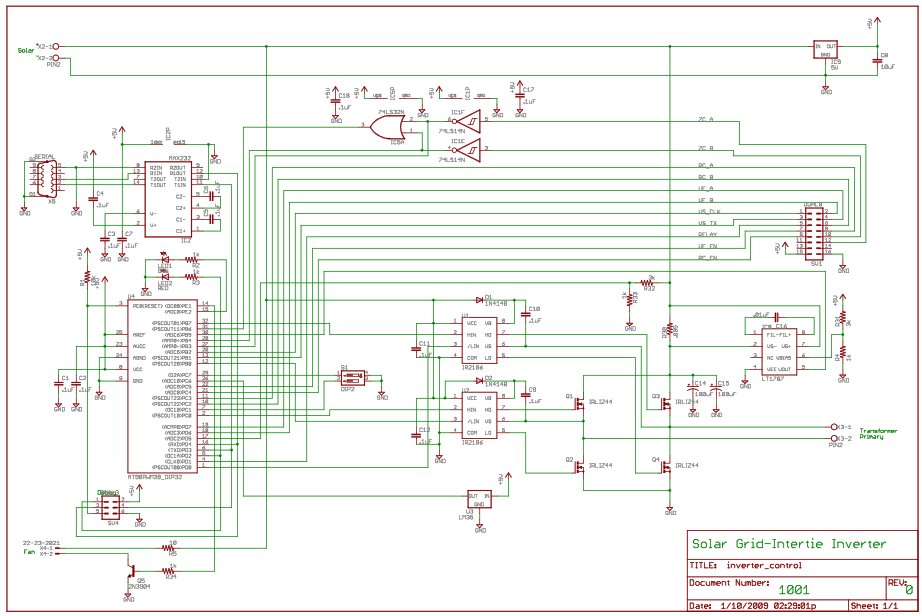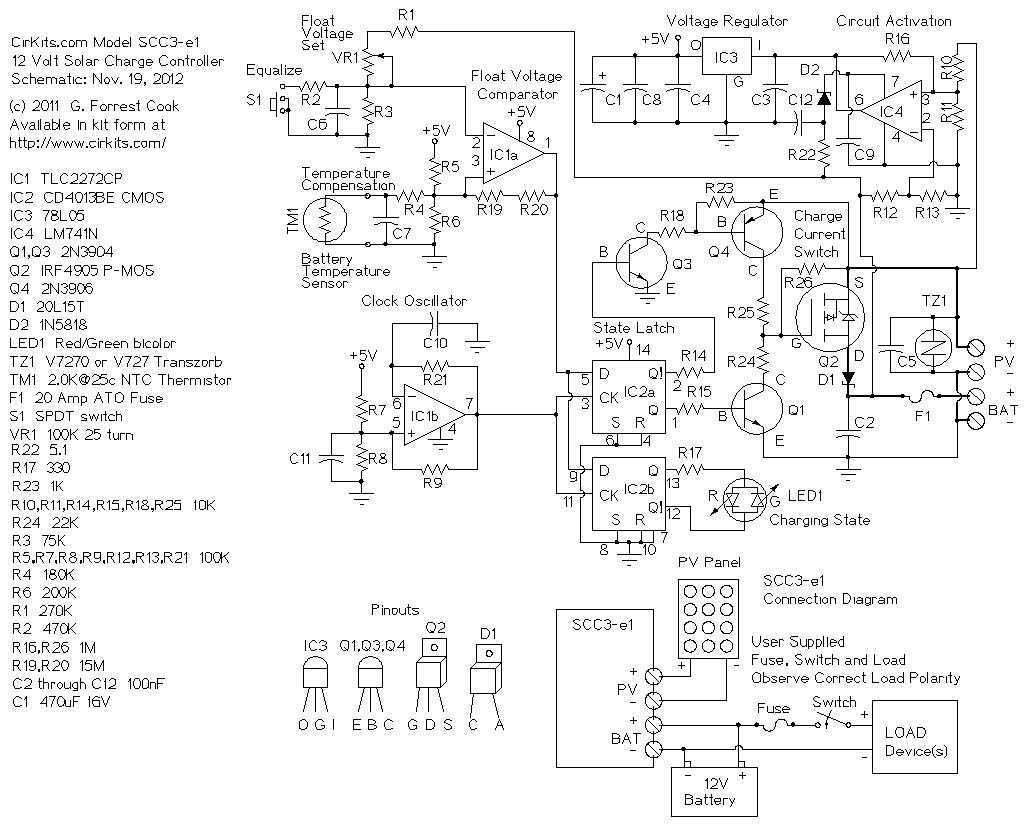
solar robot
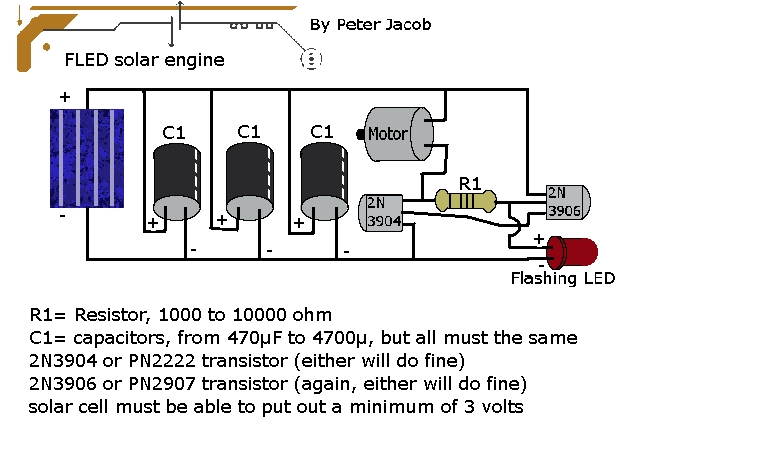
This document outlines the construction of a trimet. The required components include three capacitors, a 2N3904 transistor, a 2N3906 transistor, a resistor with a value between 1k to 10k ohms, and a solar cell with a minimum voltage of 3 volts.
The trimet circuit is designed to operate as a basic solar-powered device that utilizes the specified components to perform its intended function. The circuit's core consists of the two transistors, 2N3904 and 2N3906, which are commonly used for switching and amplification tasks. The 2N3904 is an NPN transistor, while the 2N3906 is a PNP transistor, allowing for complementary operation in the circuit.
The three capacitors serve multiple purposes, such as filtering, coupling, and decoupling within the circuit. Their values should be chosen based on the frequency of operation and the specific requirements of the design. A typical configuration might involve using one capacitor for coupling the signal between the transistors, while the others could be used for power supply decoupling or timing applications.
The resistor, with a value ranging from 1k to 10k ohms, is essential for biasing the transistors. The specific resistance value will affect the base current and, consequently, the overall gain of the transistors. Proper selection of this resistor is crucial to ensure that the transistors operate efficiently within their active region.
The solar cell, which must provide at least 3 volts, serves as the primary power source for the circuit. It converts sunlight into electrical energy, allowing for the autonomous operation of the trimet. The output voltage of the solar cell should be sufficient to forward bias the transistors and power any connected loads effectively.
In summary, the trimet circuit is a simple yet effective design that integrates basic electronic components to harness solar energy. The careful selection and arrangement of the capacitors, transistors, resistor, and solar cell are vital for achieving the desired functionality and performance of the device.This is how to make a trimet. The parts you need are: 3 Capacitors, a 2N3904, a 2N3906, a resistor(1k to 10k ohm), a solar cell (minimum 3 volts),.. 🔗 External reference
The trimet circuit is designed to operate as a basic solar-powered device that utilizes the specified components to perform its intended function. The circuit's core consists of the two transistors, 2N3904 and 2N3906, which are commonly used for switching and amplification tasks. The 2N3904 is an NPN transistor, while the 2N3906 is a PNP transistor, allowing for complementary operation in the circuit.
The three capacitors serve multiple purposes, such as filtering, coupling, and decoupling within the circuit. Their values should be chosen based on the frequency of operation and the specific requirements of the design. A typical configuration might involve using one capacitor for coupling the signal between the transistors, while the others could be used for power supply decoupling or timing applications.
The resistor, with a value ranging from 1k to 10k ohms, is essential for biasing the transistors. The specific resistance value will affect the base current and, consequently, the overall gain of the transistors. Proper selection of this resistor is crucial to ensure that the transistors operate efficiently within their active region.
The solar cell, which must provide at least 3 volts, serves as the primary power source for the circuit. It converts sunlight into electrical energy, allowing for the autonomous operation of the trimet. The output voltage of the solar cell should be sufficient to forward bias the transistors and power any connected loads effectively.
In summary, the trimet circuit is a simple yet effective design that integrates basic electronic components to harness solar energy. The careful selection and arrangement of the capacitors, transistors, resistor, and solar cell are vital for achieving the desired functionality and performance of the device.This is how to make a trimet. The parts you need are: 3 Capacitors, a 2N3904, a 2N3906, a resistor(1k to 10k ohm), a solar cell (minimum 3 volts),.. 🔗 External reference

